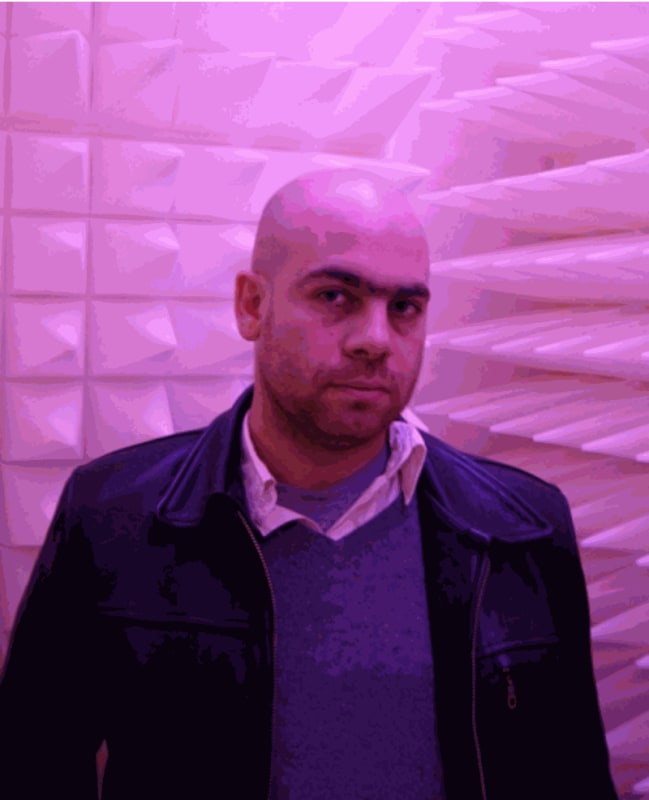Born in France in 1972, Laurent Grasso has developed a fascination with the visual possibilities related to the science of electromagnetic energy, radio waves and naturally occurring phenomena. Grasso also explores these sciences as they apply to paranormal activity, a favorite subject of 18th century scientists and philosophers, often used as parlor entertainment during the Victorian era.
In addition, Grasso uses imagery culled from the cinema and art history and, working in video, sculpture and, most recently, painting and drawing, he recreates phenomena – both human and natural – that set up surreal and ambiguous juxtapositions of time and space. One of his most well known works, Les Oiseaux, depicts a flock of starlings filmed in the dusk sky above Rome. Taken out of its natural context, the flock of birds resembles an ionic particle field, moved as if by unseen magnetic waves. Other works create visual representations of energy and wave movement found in places such as the Very Large Array Observatory in the desert of New Mexico.
Grasso often intentionally manipulates imagery by imposing unique and unusual perspectives onto his subject matter, thereby subverting the viewer's instinct to accept what they see at face value. A continually shifting viewpoint is at the heart of Grasso's aesthetic sensibility – in Grasso's words, "the idea is to construct a floating viewpoint, thereby creating a discrepancy in relation to reality. We move from one viewpoint to another, and that's also how we manufacture states of consciousness."
Grasso was awarded the Marcel Duchamp Prize in 2008 and is the subject of a major monograph – Laurent Grasso: The Black-Body Radiation – published by les presses du réel. Recent solo exhibitions have included The Horn Perspective at the Centre Pompidou andGakona at the Palais de Tokyo, both in Paris, France in 2009. Grasso was also included in 9th Sharjah Biennial and Manifesta 8. For many recent exhibitions, including Portrait of a Young Man at the Bass Museum of Art, Miami Beach, URANIBORG at the Galerie nationale du Jeu de Paume, Paris, France and the Montreal Museum of Contemporary Art, Canada and, most recently, Disasters and Miracles at the Kunsthaus Baselland, Switzerland, Grasso has acted as a co-curator in conjunction with the museums, altering the architecture of the exhibition spaces and merging his works with pieces in the permanent collections of the institutions in order to create a unique and dynamic viewing experience.
Grasso's US public art debut, Infinite Light, was installed on the exterior of the Hunter College Lexington Avenue pedestrian walkway in New York in 2008. One of Grasso's major architectural installations includes Nomiya (2009 - 2011), the temporary project he designed which was situated on the rooftop of the Palais de Tokyo in Paris, France.
Laurent Grasso lives and works in Paris, France.

